The Early Years - RML Labs
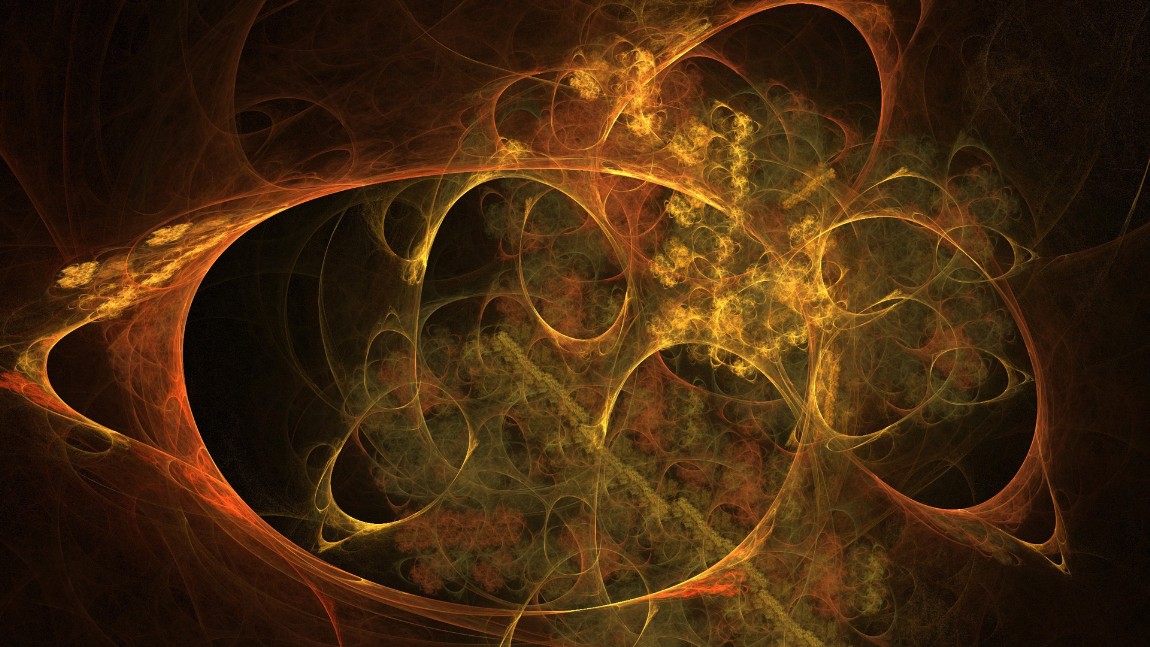
RML Labs
Showcasing the work of independent audio engineer, software developer and artist...
Bob Lentini

My Story
The Early Years (1968 - 2002)
I am a native of Philadelphia, PA, where I majored in Engineering at Drexel University. My involvement with music and audio began in grade school, where I became a self-taught guitar player and drummer/percussionist.
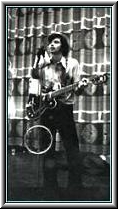
Through high school and college, my interest expanded to electronics, specifically audio electronics, and I quickly moved from onstage, playing drums and guitar, to backstage maintaining and operating the audio and mixing equipment.
In a short time, I had gained a reputation as an audio engineer and found myself designing, constructing, and collecting an assortment of recording and mixing equipment in my garage. So began an official career as an audio engineer.
1971
In 1971, at the age of 21, I moved to Las Vegas to reconnect with my older brother, Michael Darrin, who was an established dancer within the Las Vegas casino circuit. As fate would have it, I ventured into a nearby Lafayette Electronics store to purchase a part for an amplifier circuit I was building. I found myself engaged in conversation with the store manager regarding a large mound of equipment repair jobs piling up in the shop due to the previous repair tech unexpectedly walking out the day before.
Eager to find work, I offered to help with the repairs, even though I had no experience with about 95% of the equipment stacked on the shop table. The manager, appreciating my enthusiasm, agreed to try me on a commission basis, and for the next several weeks, I diligently poured through user/repair manuals, schematics, and technical specs, learning the ins and outs of every piece of gear on the repair table. This lead to a full-time permanent position with the company, and served as the vehicle that soon established me as an in-demand equipment repair technician within the electronics community.
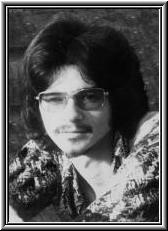
Following my job at Lafayette Electronics, I was offered and accepted a position with one of Las Vegas' largest music centers - Southern Nevada Music, to head up the repair division in their new facility. The store held contracts with most of the major casino showrooms, giving me the opportunity to interact with some of the biggest names in entertainment.
On call around the clock, I regularly maintained the showroom equipment for many of the major acts that performed in town. Improving my skill set at fixing music gear, I specialized in, and soon became recognized as one of the most requested Hammond B3 repair technicians on the strip.
During this period, I had formed connections with many serious musicians coming through and living in Las Vegas, and as a result, began experimenting with recording techniques in my home.
1974
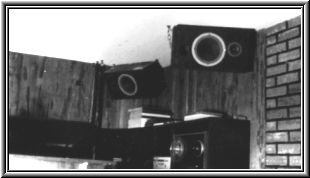
In 1974, with the help of a dear friend, Angel Lopez, I purchased some property in a remote location on the edge of town and constructed my first recording studio, complete with in-wall patch panels, a vocal booth, soundproof walls, and a self-designed, custom-built 8-speaker surround stereo monitoring system (which I still use today in my personal mixing and mastering production room). This marked the official beginning of my journey as a recording engineer.
I designed and hand-built individual mixing components, including an optical compressor and my own spring reverbs, and blended them with standard consumer mic preamps, equalizers and other gear, to create a makeshift 8-channel console.
I also inventively linked two TEAC-3340 tape decks together, stacking them on top of each other. By meticulously placing nail brads into the side wood panels at the precise positions as tape guides, I was able to run a reel of double-wound tape across the headstacks on both machines simultaneously, reconnecting into a single take-up reel on the top machine. This effectively gave me an 8-track machine before 8-track decks were available in the consumer market.
I quickly established a following, working with some extraordinary talent, both known and unknown, and earned a very respected reputation within the Las Vegas recording community.
1977
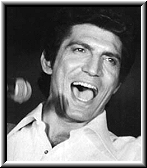
In 1977 I further expanded my audio experience when I accepted an invitation to travel on the road as a live sound engineer with famous Tenor vocalist, Sergio Franchi. My travels took me all over the United States, and on an exciting European trip through Italy, Monte Carlo on the French Riviera, and Switzerland.
1979
In 1979, the opportunity arrived to build a serious commercial recording studio with the help of a prominent investor. My close friend, Dan Henderson and I, found "the perfect" ranch-style property in a remote location on the south outskirts of town. At that time, all one could see from this location besides the open mountain range and desert, was a freeway exit and a truck stop a mile away.
After securing the property, we enlisted the help of another close friend, Jim McMurray, who was living in Kansas, but happily relocated to Las Vegas to be a part of this new venture. On the eve of Christmas, with sledge hammers and dreams in tow, the three of us worked together to tear down interior walls of our new facility, opening it up for the newly envisioned studio layout. By New Years Day, the new floor plan was ready to implement.
Jim was living in the building during the construction, but many nights all three of us found ourselves camping out on the bare floor in sleeping bags, brain-storming about new ideas, and completely absorbed in our new project.
The first phase of the construction found us completing the woodworking shop, the electronics shop, and darkroom areas.
The plan was to have me begin work on all the electronics design and construction, while Jim and Dan handled the acoustic design and physical room construction.
In order for me to construct the console and control room audio gear, I utilized my amateur photography experience to not only properly equip the dark room, but also master the art of shooting and developing the circuit board transparencies, which I used in the process of acid-etching the circuit boards by hand.
In the course of nine months, while Dan, Jim and a few friends completed the floor plans and studio construction, I spent most of my time in the electronics workshop, and dark room, designing and testing the circuitry, and constructing the individual modules of the 16-channel console.
I poured every ounce of my time and focus into the new console, soldering hundreds of thousands of circuit board connections, and internal cable harness and patchbay connections. I used the latest high-slew rate op-amp chips which I acquired off the back end of a military production run before these chips were commonly commercially available. I felt these chips, plus the fact that every aux send and branch from the main channel signal path was electronically buffered, gave this console an edge over other commercially available consoles at that time.
While I was completing the rest of the control room equipment, including my own design of compressors, reverb units, effects processors, power amplifiers, etc., Dan and Jim completed the rest of the studio construction.
The studio had an incredible unique and personable design, with a comfortable mountain lodge motif, including an open fire pit barbeque in the lobby, and natural wood, brick and stone throughout. Dan's mate, Kim, added her artistic flair by fashioning a 300 lb. hand-crafted entrance door sporting an image of a guitar player fashioned out of woodchips, as well as a hallway of carpet art off the main lobby featuring an entire scene of the great pyramids of Egypt.
"The Studio" opened as an 8-track facility and quickly migrated to a 16-track facility when Dan acquired access to one of the original hand-built Stephens 16-track capstanless tape machines. The Studio quickly earned a reputation as the place to go for music production in Las Vegas.
The Studio became a popular gathering spot for Vegas musicians and out-of-town players, and hosted many nightly jam sessions and late night barbecues.
The Studio remained in operation into 1982. While negotiating plans to expand the facility, unfortunate circumstances arose from irreconcilable differences between the studio and the investor, resulting in Bob, Dan, and Jim leaving the project. Soon after, the studio was closed.
1982
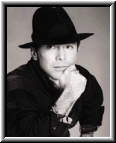
At this point, I was offered the opportunity to go back on the road as assistant audio engineer for Paul Anka, working under head audio engineer, Arty Congero - a master in live audio engineering with a career dating back to the time of Woodstock.
Again, in addition to touring around the U.S., we traveled to the Philippine Islands, Hong Kong, South Africa, and Mexico City.
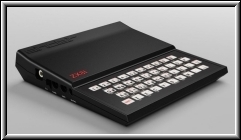
It was during this period of my life that I became involved with computers.
While on the road, I picked up a small computer that was just released at the time from England called the Sinclair ZX81. I lived in my hotel rooms teaching myself to program and understand the inner workings of this fascinating computer technology. Two weeks of programming in Basic made me aware that I needed more speed and power for the types of things I wanted my computer to do, so I began studying and programming assembly language. Assembly language is one of the most important factors that, especially at that time, in my opinion, has given my products an edge over the competition.
1984
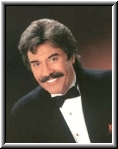 I continued on the road as a sound engineer working with various artists until 1984 when I left my job with Tony Orlando to pursue a computer career. I had been developing a computer program on the Commodore 64 that I decided to try to market.
I continued on the road as a sound engineer working with various artists until 1984 when I left my job with Tony Orlando to pursue a computer career. I had been developing a computer program on the Commodore 64 that I decided to try to market.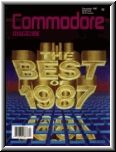
I created my company RML Labs as a way of doing business and eventually signed a contract with a software publishing company, which was soon followed by the release of my first software project, "BobsTerm Pro", a telecommunications program that captured a lot of media attention at the time. The program soared to success, as did its successor, BobsTerm Pro 128 which was voted "The Best of 1987" in the Productivity category of the December issue of 'Commodore Magazine'.
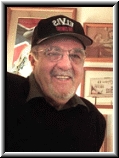
Just about the time BobsTerm Pro hit the market, I received a phone call from Joe Guercio, whom I had engineered several sessions for over the years, inviting me to be the engineer on an upcoming session in Los Angeles for a new young talent being sponsored by publishing magnate, Tom Worrell.
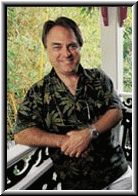
An enthusiastic music lover, and avid Elvis Presley fan, Tom sought out Joe who was well known for his work as orchestrator and conductor for Elvis.
With the top studio players hired for the project, and me engineering the session, the result was a success, and led to a new and exciting connection between Tom and myself.
1985
I was hired by Tom as a personal audio consultant, and soon found myself in the elite, influential lifestyle of Lear jets, yachts, and limousines.
I was involved in designing and installing high-end audio systems in many of Tom's properties, his personal yacht, and sailboats, as well as consulting on the audio installation at Tom's television production studios in the Virgin Islands.
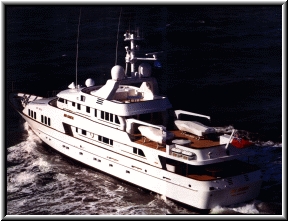
One of my favorite installations was on Tom's 47-meter yacht, the "Mi Gaea" where I installed a hidden 18-speaker surround system in the main saloon.
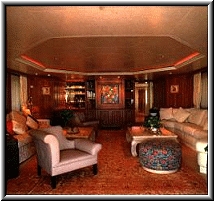
It was during my initial involvement with Tom that I was first introduced to the IBM PC. Being intrigued by this new computing environment, I became a quick study and soon found myself assisting Tom with specific organizational and personal computing issues at home and in his administrative offices.
I was soon contracted to design and create a complete custom word processing environment, based on the needs of Tom's top secretarial staff, to be distributed throughout his chain of offices nationwide. The final design took the shape of an Assembly Language TSR (Terminate Stay Resident) DOS-based, full-blown word processing environment. This software displayed all of the functionality of the most popular word-processing programs, but featured a unique non-standard simplified command structure, designed to improve efficiency and speed.
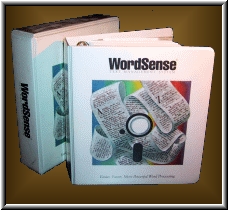 The TSR capability offered the uniqueness of allowing the word processing application to be displayed on top of other programs, such as spreadsheets and databases simultaneously - at a time when multitasking capabilities were not readily available. This program was titled "WordSense" (the word processor that made sense), and later sold independently for a short time by myself as "WordSmith."
The TSR capability offered the uniqueness of allowing the word processing application to be displayed on top of other programs, such as spreadsheets and databases simultaneously - at a time when multitasking capabilities were not readily available. This program was titled "WordSense" (the word processor that made sense), and later sold independently for a short time by myself as "WordSmith."Before the Internet was commonplace, I was privileged to be involved in the design of a BBS and electronic mail system for Tom's entire publishing network. This system, created entirely in Assembly Language, was used to facilitate internal communication throughout all of Tom's administrative offices, and even kept Tom connected via satellite while out on the yacht.
1990
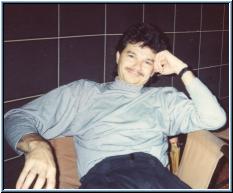 In 1990, I returned once again to freelance audio engineering while working around the clock on the creation of a computer program which I conceived years earlier on the road and called the Software Audio Console (SAC.)
In 1990, I returned once again to freelance audio engineering while working around the clock on the creation of a computer program which I conceived years earlier on the road and called the Software Audio Console (SAC.)The concept behind SAC was the virtual live mixing desk - essentially, remote control operation of the actual analog portion of a concert mixing system. I felt this software design was destined to have a huge impact on the audio industry.
The SAC design required the use of a graphics GUI-based operating environment. I explored the initial release of Windows on the PC, and also looked at the Macintosh and Atari operating systems. Deciding that none of them would meet the desired performance requirements at the time, I opted to write my own DOS-based GUI completely in Assembly Language.
This required me to communicate directly with video card hardware, as I could not obtain third party driver support for the project without large scale funding, so the GUI that I developed was designed in black and white mode for a wider range of video card compatibility.
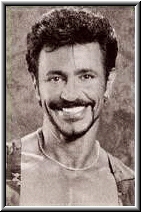
I continued working diligently on the SAC development while making my living as a freelance recording engineer. I found himself creating, composing, and editing complex production music sound tracks, many for my brother, Michael Darrin, who by now was an accomplished Emmy award-winning choreographer and costume designer. These complicated sound tracks required, in many cases, thousands of razor blade splices within an hour and half production, and multiple layers of percussion overdubs for critical dance accents. Many of the final masters were third and fourth generation, which drastically sacrificed sound quality.
I was always looking for an alternative solution.
1992
In the springtime of 1992, a close musician friend of mine, Adam Shendal, and I decided to become partners in creating the company that would launch the new SAC technology that I was developing. And so was born, Innovative Quality Software (IQS.)
It was also at this time that I became aware of a small company called Digital Audio Labs, and their sound card product for the PC called the CardD.
Computer-based hard disk editing solutions at this time were extremely expensive, and out of reach for most people, including myself. I saw the CardD as an opportunity to bring this technology to the masses at an affordable price, and so the seed of Software Audio Workshop (SAW) was planted.
The October AES show was being held in San Francisco that year, and six weeks before the show, it was decided that this would be the time and place to introduce IQS and unveil its new technology.
With such a short time to prepare, I worked non-stop to move my demonstration code into the then reasonably mature Windows 3.1 operating system. Working under the wire, I taught myself the Windows API and C Code simultaneously. I then ported the SAC and SAW interfaces into Windows, still managing to leave the core engine design in Assembly Language to maintain my high performance standards.
I successfully accessed the CardD hardware registers, the PCs DMA hardware registers, and hardware interrupts through low level Assembly Language hooks. This effectively bypassed Windows at the lowest level, taking charge of the machine, and giving me direct control of the hardware in Enhanced Mode, without a VXD or sound card driver. This technique was not generally recognized at the time as a possibility within the Windows environment.
Excited and ready to make our mark, Adam, myself and a few devoted friends enthusiastically set off to make our first official appearance at AES. My enthusiasm wavered a bit upon walking into the enormity of the convention center and seeing high-budget, sophisticated audio booths taking up literally thousands of square feet in the center of the show room floor. On a very tight budget, IQS was able to rent only the smallest booth space available which was located at the very back of the convention center. Watching as huge crates on dollies and hand trucks were being brought in, I and my crew made our way back to our little booth carrying the only props we had brought, which consisted of a 386-40 PC with a 14" monitor, two Radio Shack speakers, and a small power amp.
AES Recap:
AES Day 1: The first few hours of the show were spent waiting for people to migrate far enough back in the show room to discover, by accident, the little IQS booth in the very last isle. One by one, we slowly convinced wayward passersby to step up to the 14" monitor to see the magic of SAC.
I confidently presented my unique and foreign concepts over and over to those who would listen, gradually making obvious impressions on those who understood my vision.
AES Day 2: The day began with a crowd of familiar faces from the day before, many of whom had dragged along a reluctant friend or two to witness what they had already seen. Word began to spread, and both excited individuals and skeptics alike crowded into our tiny booth to see if what they had been hearing about was true.
Even as they watched as I exhibited live virtual multitrack mixing through a single hardware device, many debated that what was being demonstrated was physically impossible to do within the current Windows platform.
By the end of day 2, industry executives began making inconspicuous appearances, standing in the isle behind the crowds, and observing the commotion at this little booth at the back of the show room floor.
AES Day 3: This day started with an influx of company scouts, executives and engineers, all crowding into the booth to see what SAC and SAW were all about. I found himself shaking hands with top company CEOs and having discussions about how to place this technology into the market.
The press began to show up with interest in a possible story brewing over this unheard of company with never-before-seen technology. The back isle of the show room was blocked by the crowd for the remainder of the day, as interest in this new technology grew to fever pitch.
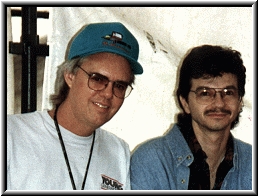 An unexpected opportunity presented itself this day when I was fortunate to meet famous console designer, Jim Gamble. Jim had expressed such enthusiastic interest in my presentation, that before AES was over, he made arrangements for us to meet and discuss my technology with the executives at Crest Audio, Inc. the manufacturers of the EX console line that Jim designed.
An unexpected opportunity presented itself this day when I was fortunate to meet famous console designer, Jim Gamble. Jim had expressed such enthusiastic interest in my presentation, that before AES was over, he made arrangements for us to meet and discuss my technology with the executives at Crest Audio, Inc. the manufacturers of the EX console line that Jim designed.This marked the beginning of a long-term friendship with Jim, and a successful collaboration on the design and creation of the future DCX console. Jim shared with me that he had been dreaming of designing a fully recallable console for years, and that the technology that SAC represented would make this all possible.
AES Day 4: The last day of the show, many introductions were made, meetings were scheduled, and the press camped out at the IQS booth. This unpredictable debut was a welcome success.
I was grateful for the high volume of unsolicited press in the months following the show.
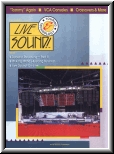
Excerpts from the Live Sound Magazine AES Review article:
Call it virtual, on-screen, whatever; computer-controlled audio production mustered big crowds at the 1992 AES show.
"If you build it, they will come."
. . .
Bombs Away
A second processor-based system that turned heads at AES was SAC. It's not the Strategic Air Command; it's Software Audio Console. Developed by Innovative Quality Software, which has offices in Las Vegas and San Diego, SAC is essentially a computer program that emulates traditional mixing console functions.
Don't be surprised if you've never heard of SAC. Until AES, few people had. Yet, the SAC booth was almost always packed — many times with vendors and manufacturers, many times with regular audio citizens. The SAC demo was intense, moving quickly to try to cover all of the ground. Little was left to the imagination. These folks tried to make it impossible for you to not catch on.
SAC is a Windows-based system that assembles and integrates on-screen audio control icons, such as faders and rotary pots, into a representation of a mixing console. Access to these controls is achieved by point-and-click selection of a particular audio control icon. Manipulation of the controls is a click-and-hold or click-and-drag procedure common to any personal computer control interface.
Promising an eventual infrared, remote, head-worn device that allows mobile mixing in a virtual mixing environment, the SAC prototype "console" seen at AES featured 60 inputs, a 9-band graphic EQ, 12 aux sends, eight sub assigns, a noise gate and a compressor. Remember, this particular configuration is simply representative of how configurations could be made.
The single caveat here is that the SAC software shown during the '92 AES show was a prototype. You couldn't listen to the system operate. Only the onscreen (control) portion of a live mix could be displayed, but no great leap of faith is required. This approach is intuitive. Console setup is nothing more than data entry. Sure, you have to generate the data yourself, but, when you decide to set kick drum EQ like this and to add some compression, it's still just data entry.
The SAC ramrod is an engineer/programmer named Bob Lentini. He employed a hybrid of "C" and assembly language for SAC's customized MS-DOS (disk operating system). Extraneous command information was stripped, and only the information required for audio processing was retained. During the demo, at least, this approach appeared to accelerate processing speed and access time significantly over a "regular" 386/25 or 33 running Windows. Of course, the software is MIDI-implemented.
Potential refinements not mentioned during the SAC demo could eventually include a touch-sensitive screen and a single, mouse-like, interactive fader and rotary pot for setting and adjusting controls. This would allow engineers to touch the part of the screen they needed to control and set the adjustment in a traditional twist or push-pull fashion.
The SAC system also offered some hard disk recording, which obviously could be included as part of this. It is presumable that every system could be double-rigged for a second engineer at a second console who could be multitracking all performances to hard disk for recording, but the direct-to-disc recording field already is cluttered with competition and littered with failure already.
The SAC system seemingly evolved away from the traditional influences of the major corporate R&D centers. There are advantages and disadvantages to this. Without prejudice toward existing systems, Lentini assembled a logical, workable approach, and it is obvious that he had the unusual freedom and skill to "just make it happen." Without involving the heavy hitters early, however, the actual time for SAC (or some variation) to get to market may be prolonged. The biggest obstacle facing the SAC project will be the expensive allotment of resources for a new company to "prove it really works."
. . .
1993
While waiting for ongoing meetings and negotiations surrounding the SAC technology to materialize into a workable contract, phone calls for the SAW software - which was still in beta - began to escalate.
I turned my development focus toward completing the SAW product, which interestingly enough, was destined to become the lifeblood of the company. Within a few months after the show, IQS took and fulfilled, by hand, the first orders of what would eventually come to be known as SAWClassic.
Over the course of the year, orders for SAW began to pour in, with little more than word of mouth and CompuServe to advertise. I continued to expand the SAW interface, with negotiations for SAC virtually stagnate in the background.
SAW’s interface grew steadily and eventually began competing directly with products costing thousands of dollars. SAW was selling for $599. Consequently, it took off on a world wide scale.
1994
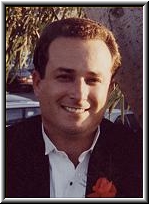 Around February of 1994, desperately needing help with the responsibility of running the company, I enlisted the help of my dearest friend, Etienne Muson, a person with an unbelievable blend of computer and business skills whom I always admired as someone who could dive in and get the job done regardless of the circumstances.
Around February of 1994, desperately needing help with the responsibility of running the company, I enlisted the help of my dearest friend, Etienne Muson, a person with an unbelievable blend of computer and business skills whom I always admired as someone who could dive in and get the job done regardless of the circumstances.I felt I had finally found the other half of the team I had been searching for. Soon after, we had leased a 3,700 square foot property and moved the company.
Tragically, three weeks later, I received a devastating phone call that Etienne had been killed in a small plane crash while on an overnight business trip to clean up the last of his previous business obligations. His wife, Kathy, remained with the company and helped me continue to build IQS.
Times were difficult through the summer of 1994, due to the unexpected loss of Etienne, but it seemed as though the company was blessed and finally all the hard work, long hours and dedication paid off. Sales and recognition began growing rapidly and I managed to create additional products that enhanced the power of SAW, and soon SAW became a force to reckon with in the audio production industry.
Near the end of that summer I took notice of a new product that Yamaha had released - the ProMix 01, midi controllable mixer. This was a revolutionary product that had a particular appeal to me.
It was a small mixing console that was the first to be MIDI controllable. This meant that all of its functions could be remotely controlled by a computer using a MIDI sequencer program. While representing a major breakthrough in technology, controlling the device that way was kludgy at best.
With SAC negotiations no longer showing promise, I went back to the drawing board, in close collaboration with my assistant programmer, Hristo Doichev, and after a quick revision of the SAC software graphics and engine, the Software Audio Midi Mixer (SAMM) was born.
My dream was being realized. This was the vehicle I had looked for in the beginnings of IQS.
SAMM was perfected and released in the first quarter of 1995, and quickly started to catch on. It was soon used in major tours all around the world, by artists such as Stevie Wonder, Neil Diamond, and Earth Wind and Fire. SAMM also toured the country with McDonalds conventions and found its way into major hotels and theaters, including Broadway in New York.
SAW, in the meantime, had become so popular that I was now being asked for features that its basic design was not capable of supporting, such as multiple sound card output, live plug-in effects processing, more tracks, mono/stereo compatibility, and multitrack waveform drawing. I knew it was time to take what I had learned from SAW and design the next generation product - SAWPlus.
Managing a rapidly growing company, learning about payroll, taxes and insurance, plus programming the new code, overseeing the other products, and satisfying distributor and dealer concerns, all served to fill up my 16 to 18 hour days. Company resources were stretched to the limits, with money being spent on needed research equipment, advertising expenses, and machinery necessary to meet the demands of product fulfillment.
1995
In October of 1995, SAWPlus was released to registered users at a reduced price, and the response was overwhelming. The company income soared, and within 60 days SAWPlus was responsible for more sales than the total sales of all products combined since the beginning of IQS. This success afforded IQS the luxury of moving into a large remodeled commercial facility, and expanding the IQS staff to 14 employees.
Heavy emphasis on tradeshow exposure and magazine advertising during these years resulted in a positive flow of media recognition and numerous awards.
1997
In 1997, SAWPlus32, and SAW32 were released, designed for the new 32-bit Windows API, and came with more tracks, more features, and DirectX and VST compatibility. By this time SAW was well established on an international level.
The advent of the Internet allowed IQS to completely restructure itself into a full-fledged cyber company. Individual client download areas opened up new potential in being able to offer the SAW programs direct, as well as being able to supply end users with a direct method of accessing updates to the latest version of the program.
1998
1998 brought the release of SAWPro - with a newly designed hi-res 24-bit audio engine. SAWPro represented the first product from IQS truly capable of competing in the high-end professional DAW workstation market place, and was recognized for its ability to replace systems in excess of 20-30 times its cost.
It didn't take long for SAWPro to find its way into applications as diverse as recording sonar traces of submarine surveillance, to running timed fireworks displays, to the Recording Studio of Congress, to Abbey Road studios, to name just a few. The rock solid nature of the tight Assembly code was gaining a huge fan base for its pro level performance.
I continued to implement feature after feature into the SAWPro interface, until I was faced with the inevitable roadblock of constrictions and limitations of the original core engine design. I decided that it was now time to build the next generation of SAW on a brand new foundation.
The new platform was based on the merging of the virtual console technology of SAC and SAMM, and the digital audio technology of the SAW product line, creating a seamless blend of the two, bringing my vision of a virtual 'studio in a box' into reality. SAWStudio was born, representing a revolutionary breakthrough in the way audio editing and mixing could be approached from that day forward.
I was determined to achieve real-time latency playback and mixing capabilities to closely emulate the feel of a physical console without hardware, and I spent the next 2 1/2 years working on the design of the new engine alone. My goal was to emulate every knob, switch, control, and all of the signal routing and processing capabilities of the most expensive hardware consoles available. SAWStudio ultimately realized itself into something far beyond this original vision.
2000 - 2001
The anxiously awaited Pre-Release of SAWStudio was unveiled in October, 2000. The initial feedback from users was extremely enthusiastic, as they adapted to this radical new design, and experienced the way in which SAWStudio was effectively and positively altering the way they worked with audio. Numerous revisions and enhancements followed during the pre-release stage, with the final release officially delivered in April, 2001. Large scale, fully automated, real-time virtual mixing had arrived.
Previous performance and feature limitations fell by the way side, and the program continued to gain in strength with each new update. The hand written assembly code once again allowed me to maintain the high performance standards, even as the program grew dramatically in complexity, and became able to emulate and replace hundreds of pounds, and hundreds of thousands of dollars worth, of physical gear. My vision, which began back on those early tour dates with Paul Anka, had now come full circle.
Though IQS anticipated a serious boon in sales upon SAWStudio's release, after the initial influx of orders, the excitement turned to apprehension as the general public began to question the validity of a product that was making such wild claims as SAWStudio. It also became apparent that the sophistication of the SAWStudio engine, coupled with the growing complexity of the Windows environment, was raising mounting concern over its ability to meld into the market of generic store-bought PCs.
Another serious obstacle came when the expected upgrade sales from existing SAW users fell far short of the predicted number, again negatively affecting the bottom line. Upon further speculation and discussion with those users who had made the decision not to move up to SAWStudio, the realization was made that basically they were "happy where they were," and didn't feel the need to jump into this new technology. It became increasingly obvious that IQS and its current user base was not willing to take this big of a leap at this time.
It was with this conclusion that I realized that this product was not a viable choice for my existing user base, which accounted for the majority of forecasted sales, and that I would need to change direction and somehow reach a new breed of audio consumers. It was clear to me that IQS was unable to maintain its own weight, and still provide the necessary resources to carry the marketing campaign needed to attract a brand new audience. Feeling conflicted about the current state of IQS, I found himself facing one of the toughest decisions of my career so far.
'Bob the business owner' was greatly concerned about the survival of my company and maintaining the loyalty of my user base of ten years.
'Bob the visionary and artist', believed so strongly in my vision that I could not allow anything, including my own company, to compromise SAWStudio's future or stand in the way of its progress.
My passion for SAWStudio's success won out, and I boldly let IQS go in November of 2001.
A surprising and heart-warming show of support from many SAW users helped me to transition out of my ten-year old company, and reestablish myself as an independent programmer/artist.
2002
With the responsibilities of IQS behind, I regrouped under my original DBA of RML Labs, and quickly sprung into action, seeking opportunities and resources to propel SAWStudio in the pro audio market. During pending negotiations, I continued to put all my energy into the further development of SAWStudio. By the end of April, 2002, the biggest, most feature packed update yet was released, astounding loyal SAWStudio users.
With this update which activated the video track and DirectShow/Firewire DV Video compatibility, SAWStudio crossed over into a new potential market.
The future for SAWStudio continued to demonstrate amazing potential, as more and more people became aware of the SAWStudio experience. The public reaction to SAWStudio demonstrations indicated that the enthusiasm and belief in this product was undaunted if not stronger as a result of the changes and decisions I had made. Public interest continued to elevate, and I continued to reach for new heights with this emerging technology.
Already in development at this time and at the beta stage, was the forthcoming Midi Workshop add-on to the SAWStudio core engine, offering a full MIDI sequencing environment, and again opening up potential for another niche market.
My heartfelt belief was that the success and industry acceptance of SAWStudio was inevitable. With tongue in cheek, I confidently maintained...
"It's only a matter of time. Resistance is futile. " ;-)